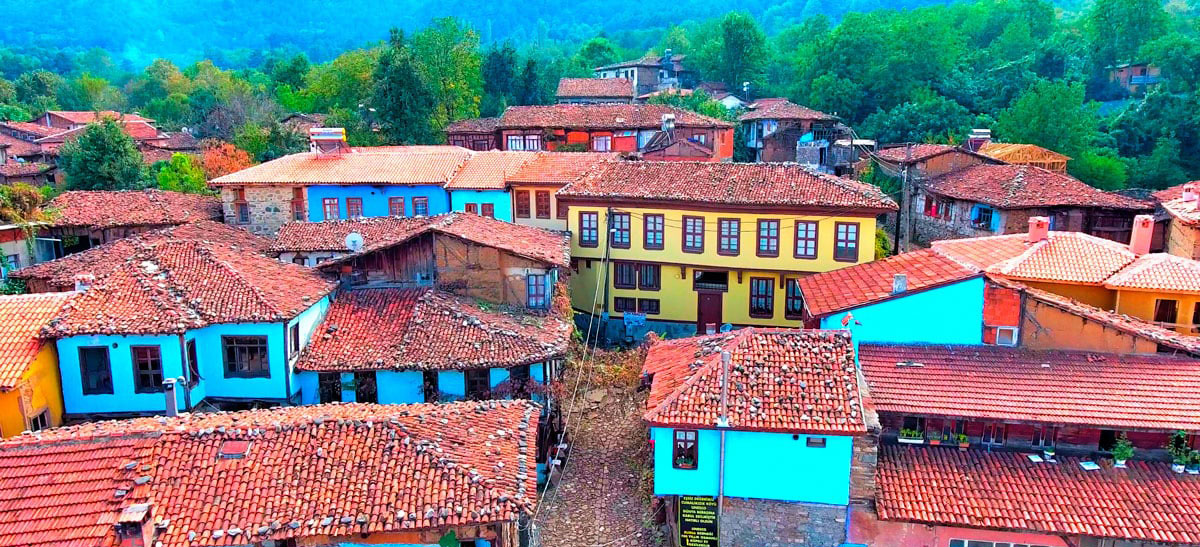Cumalıkızık Village
Cumalıkızık is an early Ottoman foundation village located north of Uludağ at km 12 of the Bursa-Ankara highway, east of Bursa.
Khan District
Founded as the first capital of the Ottoman Empire and shaped by complexes and villages according to early Ottoman traditions within the foundation system, Bursa's important commercial role throughout history is revealed by the large inns, bedestens and bazaars in the city. The Khan District has been the heart of the city's economy since the 14th century.
Emir Sultan Mosque
Emir Sultan Mosque and Complex was built in the 15th century, during the reign of Sultan Mehmed Çelebi, by Hundi Fatma Hatun, daughter of Yıldırım Bayezid, on behalf of her husband Emir Sultan.
Green Mosque
Yeşil Mosque was built by Sultan Mehmed I (Çelebi) between 1419-1420, as stated in the three-line inscription written in celî sülüs above the crown gate. The architect of the building is Hacı İvaz Pasha.
Muradiye Mosque
Muradiye Mosque was built by Sultan Murad II as the central structure of his complex. The three-line Arabic inscription written in celi sülüs calligraphy on the marble above the mosque's low arched entrance door states that the construction of the mosque was started in 1425 and completed in 1426.
Misi Village
It is an old Greek town 6 km away from Bursa. It was established on the banks of Nilüfer Stream, which gives its name to the district to which it is connected. The village, whose modern name is Gümüştepe, is home to 3000 years of history.
Botanical Park
Within the scope of Bursa's green belt, the “Soğanlı Botanical Park” was opened in 1998 to provide the city with plenty of oxygen, new recreational and healthy sports areas.
Saitabat Waterfall
Saitabat Waterfall, which has an important place among the natural riches of Bursa, is a place frequently visited by nature lovers and peace seekers.
Tophane Square
Named after the cannons that were fired in the past to announce the time of iftar and sahur during Ramadan, Tophane Square features historical cannons, a clock tower, Osmangazi and Orhangazi Tombs, a viewing terrace, the War of Independence Martyrdom, centuries-old plane trees and tea gardens.
Tofas Museum of Anatolian Cars
It is a museum in Umurbey Neighborhood, created by restoring an old silk factory between 1998 and 2002. The museum, which is the first and only one of its kind in Turkey, is built on an area of 17,000 m² and tells the story of the transition from the two-horse Bursa horse-drawn carriage to today's modern automobiles.
Umurbey Silk Production and Design Center
It is a museum in Umurbey Neighborhood, created by restoring an old silk factory between 1998 and 2002. The museum, which is the first and only one of its kind in Turkey, is built on an area of 17,000 m² and tells the story of the transition from the two-horse Bursa horse-drawn carriage to today's modern automobiles.
Bursa City Museum
Bursa City Museum is an important museum established in 1984 to preserve and exhibit the historical and cultural heritage of the city of Bursa.
Ataturk Mansion Museum
Located on Çekirge Street, the museum was opened to visitors as the Atatürk Museum on October 29, 1973 on the 50th anniversary of the Republic. Reflecting the 19th century features, the mansion is a 3-storey masonry building with an attic.
Bursa Specialties
Bursa is a city that stands out not only for its deep-rooted history and rich cultural heritage, but also for its unique culinary culture.
















